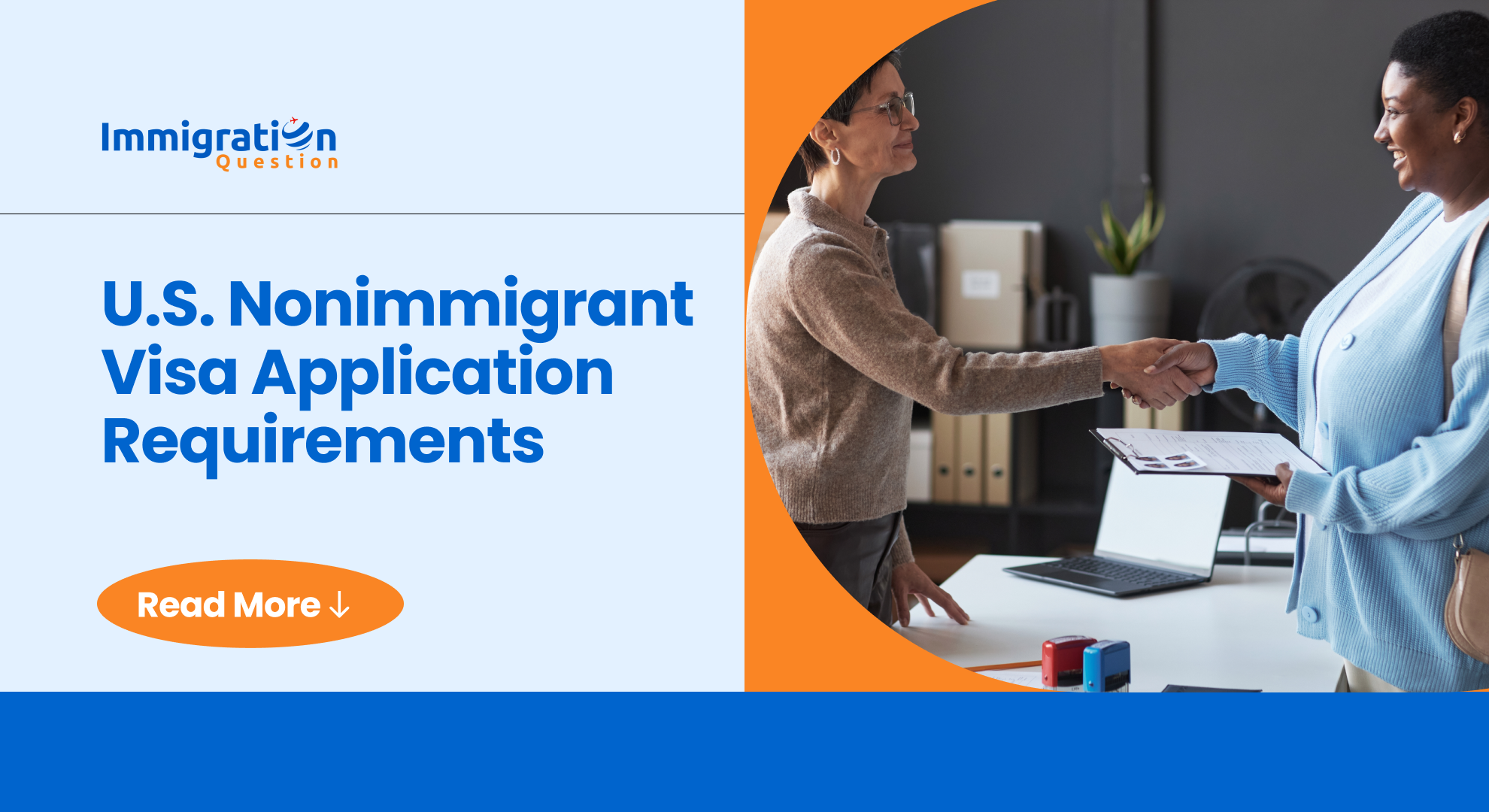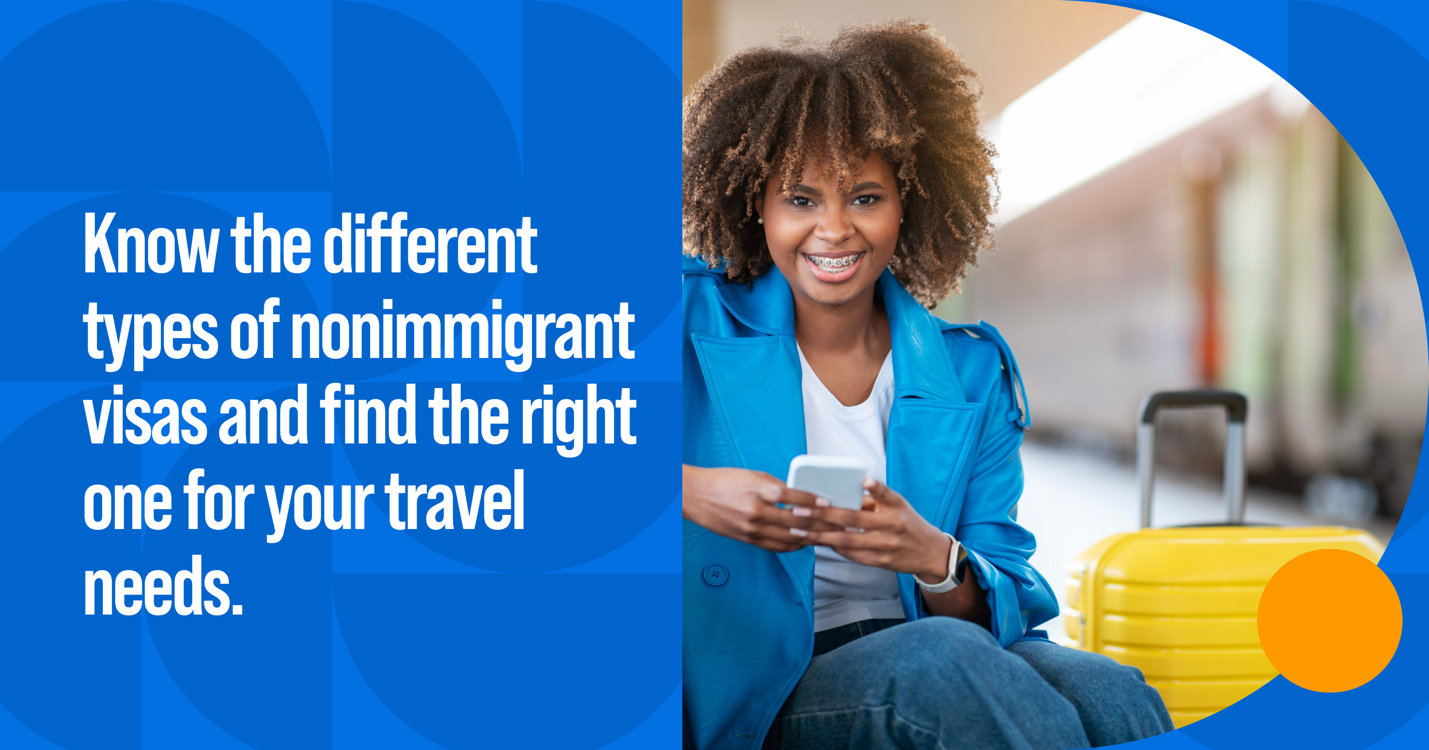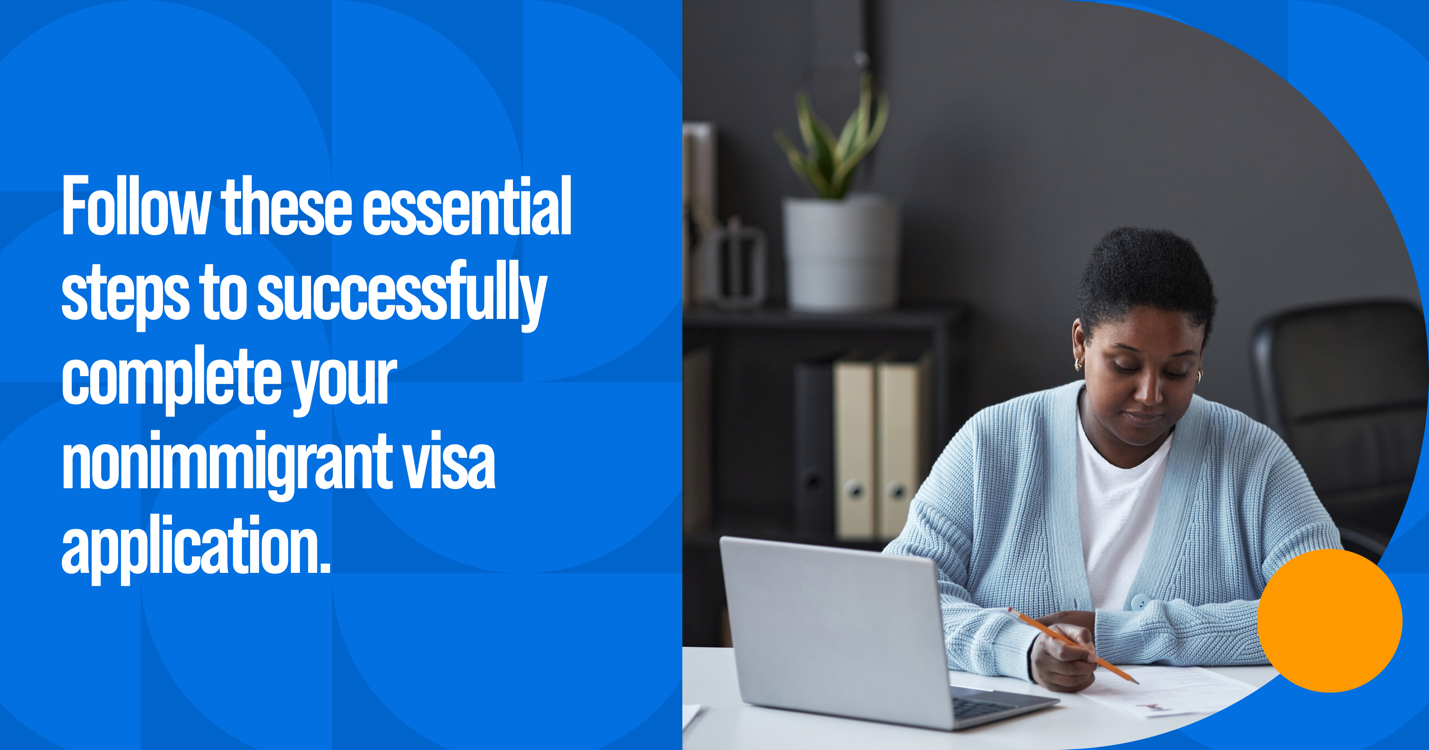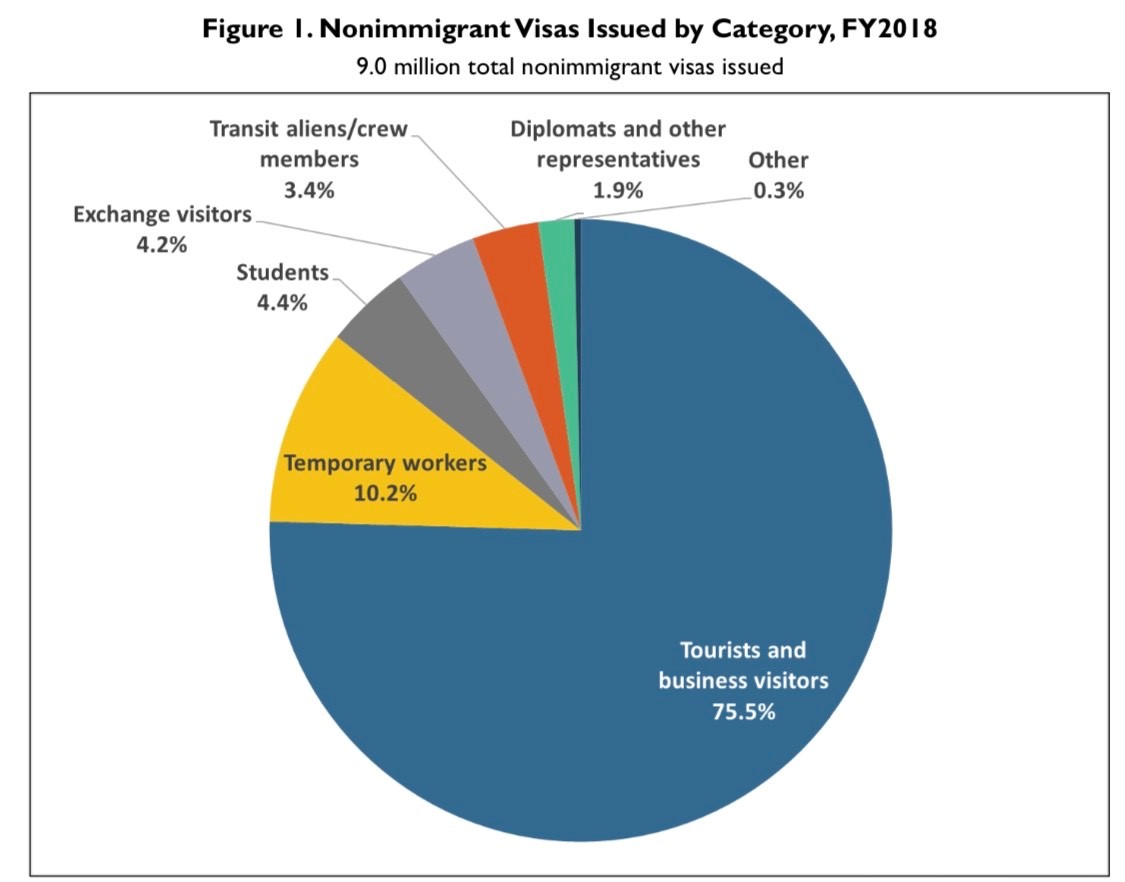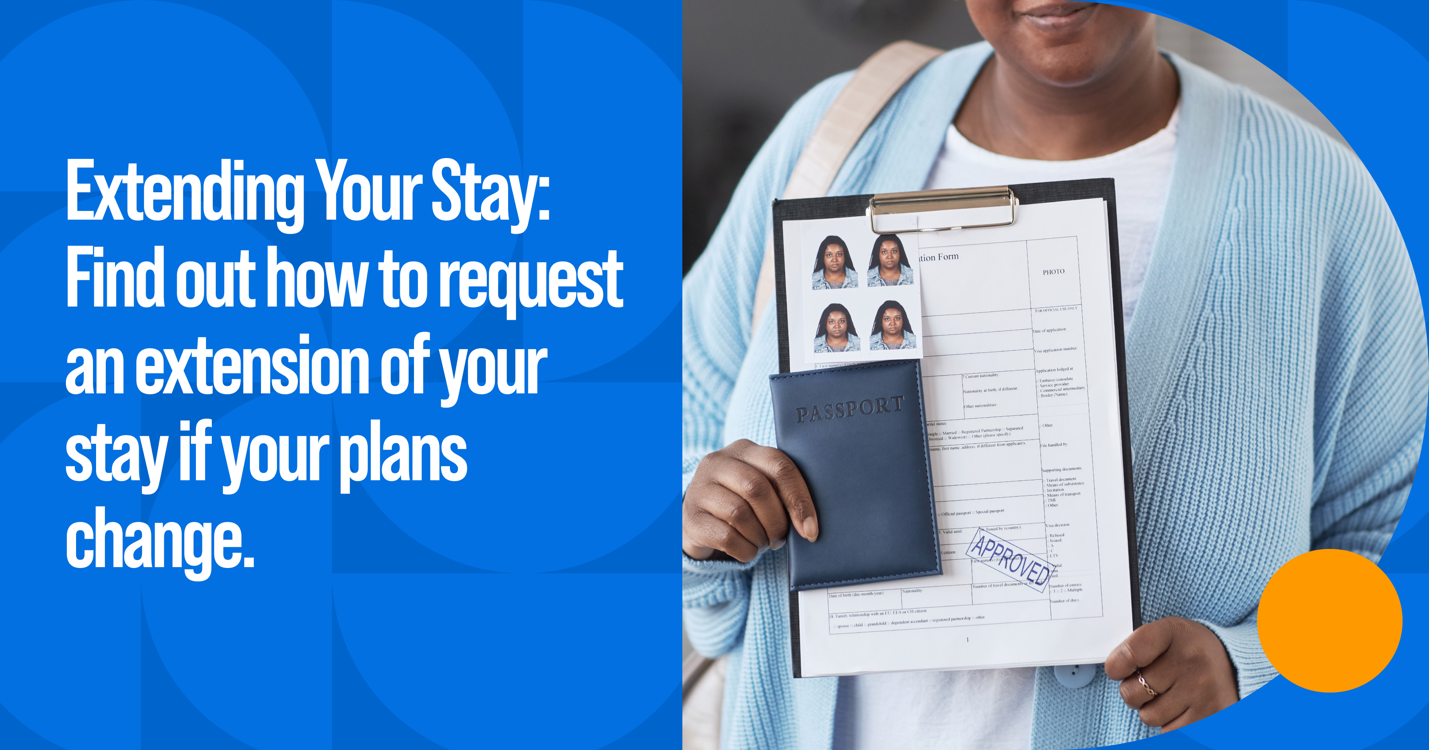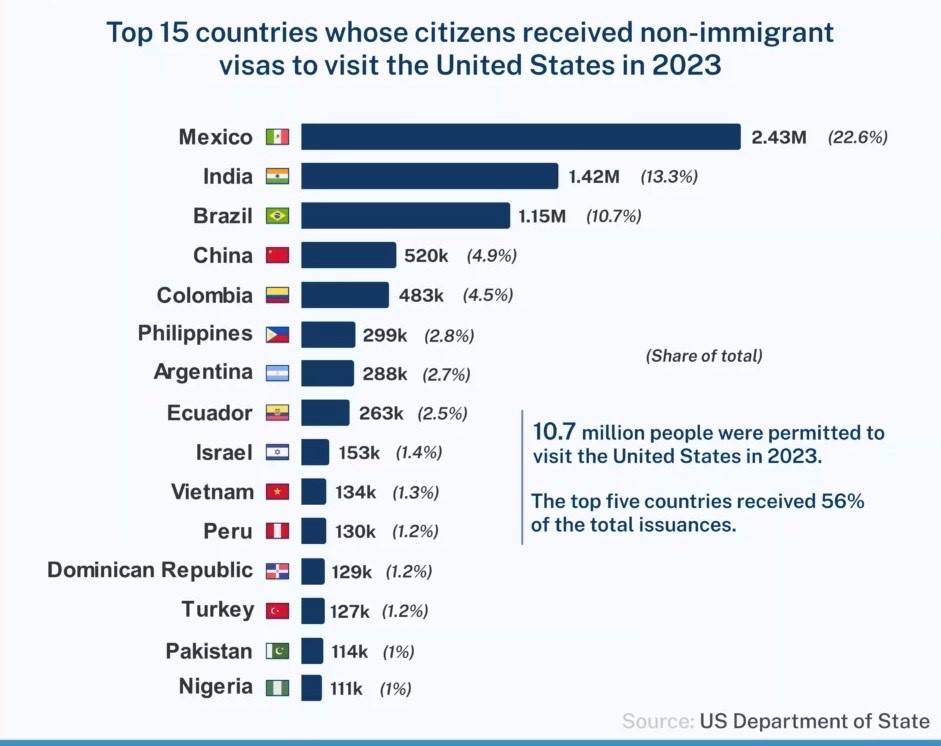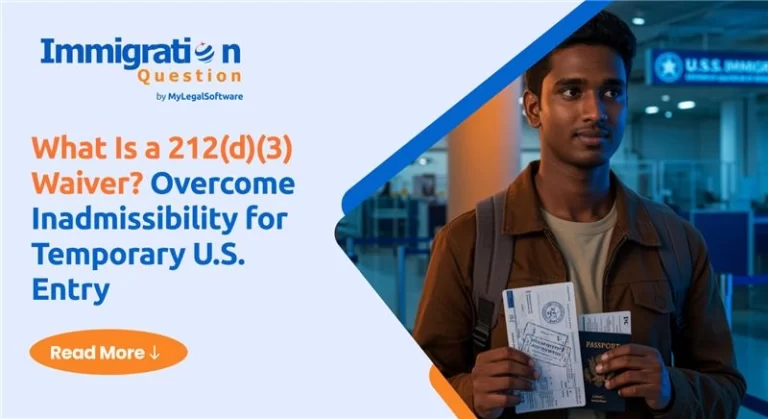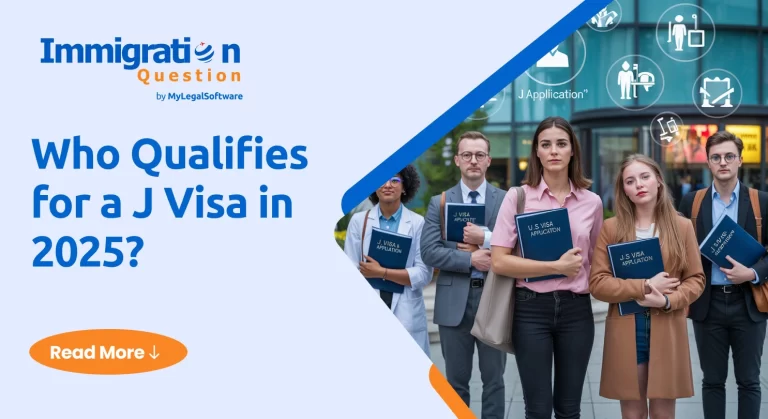When visiting the United States, foreigners must choose between two primary visa categories: nonimmigrant visa and immigrant visa. While an immigrant visa is for someone who plans to live permanently in the U.S., a nonimmigrant visa is for an individual intending to enter temporarily for specific purposes, such as tourism, business, study, or temporary work.
Nonimmigrant visas are issued based on the applicant’s intended activities in the U.S. For example, a businessperson attending a conference would apply for a different visa than a student enrolling in a university. Understanding the various nonimmigrant visa options can help ensure compliance with U.S. immigration regulations and a smooth entry process.
Need assistance with your nonimmigrant visa application? Speak with a qualified attorney at ImmigrationQuestion.com
Visitor Visas: Business and Tourism
One of the most common types of nonimmigrant visas is the visitor visa, which breaks into two sub-types:
1. Business (B-1) Visa
This visa is for those traveling to the U.S. for professional reasons, such as consulting with business associates, attending conferences, settling estates, or negotiating contracts. While the B-1 visa allows for business activities, it does not permit the visa holder to receive compensation from a U.S. source or engage in employment.
2. Tourism (B-2) Visa
The B-2 visa is for those visiting the U.S. for recreational purposes, such as sightseeing, visiting family or friends, receiving medical treatment, or participating in social events. It also covers certain non-academic activities, like taking a short course that does not count towards a degree.
3. Combination (B-1/B-2) Visa
Some travelers may wish to engage in business and tourism activities during their visit. A B-1/B-2 visa is appropriate, allowing for a mix of permissible activities under both categories.
Activities Permitted and Prohibited on Visitor Visas
While visitor visas are versatile, they come with limitations. For instance, B-1 visa holders can attend business meetings or conventions but cannot perform skilled or unskilled labor or be employed by a U.S. entity. Similarly, B-2 visa holders can enjoy a vacation, receive medical care, or attend social events but cannot engage in paid work, study, or professional performances. Attempting to perform prohibited activities can result in visa denial, revocation, or future inadmissibility to the U.S.
Other Nonimmigrant Visa Categories
For activities outside the scope of business and tourism, other nonimmigrant visa categories exist, such as:
- F-1 Visa: For academic study at an accredited U.S. educational institution.
- J-1 Visa: For exchange visitors participating in cultural or educational programs.
- H-1B Visa: For temporary employment in a specialty occupation requiring high expertise.
- O-1 Visa: For individuals with extraordinary ability or achievement in arts, sciences, or athletics.
Each visa type has specific requirements and application procedures.
Source: travel.state.gov
The table above highlights some other categories of nonimmigrant visas.
Application for Nonimmigrant visa: A Step-by-Step Guide
Applying for nonimmigrant visa to the United States can be challenging, requiring careful attention to detail and adherence to specific procedures. The steps to apply for a visa may vary slightly depending on the U.S. Embassy or Consulate where you apply. Below is a comprehensive guide to help you scale through the application process.
Step 1: Complete the Online Visa Application
1. Fill Out Form DS-160
- Online Nonimmigrant Visa Application (Form DS-160): This is the primary form for nonimmigrant visa application. You must complete the DS-160 form online and ensure that all visa information provided is accurate and matches your supporting documents.
- Print the Confirmation Page: Print the confirmation page once you have completed the DS-160. This page, which includes a barcode, must be brought to your visa interview as proof of application.
2. Upload Your Photo
Photograph Requirements: You must upload a digital photo that meets the specific U.S. Department of State requirements. If the photo upload fails during the DS-160 process, you must bring a printed photo that meets the guidelines for your interview.
Step 2: Schedule an Interview
1. Interview Requirement
Most applicants must attend an interview at a U.S. Embassy or Consulate. A few exceptions exist, such as for children under 14 and adults over 80. However, consular officers have the discretion to require a visa interview for any applicant.
2. Choose Your Interview Location
You should schedule your interview at the U.S. Embassy or Consulate in your country of residence. While scheduling your interview in another country is possible, demonstrating your visa qualifications may be more challenging outside your home country.
3. Check Nonimmigrant Visa USA Appointment Wait Times
Nonimmigrant visa usa appointment wait times vary by location, time of year, and visa category. To avoid delays, check the estimated wait times for the U.S. Embassy or Consulate where you will apply and schedule your interview well in advance.
Step 3: Prepare for Your Interview
1. Pay the Application Fee
- Visa Application Fee: Before the interview, a visa applicant must pay a nonrefundable application fee. The standard fee for most nonimmigrant visa categories is $185, though this amount can vary.
- Visa Issuance Fee: If your visa is approved, one of the nonimmigrant visa requirements USA may be to pay a visa issuance fee, depending on your nationality. Be sure to verify this requirement before your interview.
2. Gather Required Documentation
- Passport: Your passport must be valid for at least six months beyond your intended stay in the U.S. unless exempt by specific agreements. Each applicant, including children, must have a separate passport.
- DS-160 Confirmation Page: Bring the printed confirmation page from your DS-160 form submission.
- Fee Payment Receipt: If you paid the visa application fee in advance, bring the receipt as proof of payment.
- Photo: If you cannot upload your photo successfully, bring a printed copy that meets the Photograph Requirements.
3. Additional Documentation
Depending on the type of visa and purpose of travel, you may need to provide additional documents, such as:
- Evidence of Purpose of Trip: Documents that clarify why you are traveling to the U.S., such as an invitation letter for a conference or proof of medical appointments.
- Proof of Ties to Your Home Country: Documents demonstrating your intent to return home after your visit, such as employment contracts, property ownership, or family connections.
- Financial Support Evidence: If you cannot cover all trip costs, you may need to provide evidence that someone else will sponsor your travel expenses.
Step 4: Attend Your Visa Interview
1. Interview Process
- During the interview, a consular officer will ask questions to assess whether you meet the criteria for the visa category you have applied for. Be prepared to discuss your travel plans, your ties to your home country, and your ability to finance your trip.
Fingerprint Scanning: You will submit your fingerprints during the interview. The timing of this procedure may vary by location.
2. Administrative Processing
In some cases, your application may require additional administrative processing. Further processing is typically due to a need for more security checks. The consular officer will inform you if this step is necessary.
3. Post-Interview Process
If your visa is approved, you may be required to pay a visa issuance fee. After payment, the embassy will return your passport and visa. Processing times for passport returns vary, so confirming these details with the consular office is advisable.
Source: CRSreport
Applying for a nonimmigrant visa can be a detailed process, but following these steps and thoroughly preparing can enhance your chances of a successful application. Be sure to review the specific nonimmigrant visa requirements USA for the Embassy or Consulate where you will apply, as procedures and documentation requirements may differ slightly by location.
Looking for legal advice on your visa application? Experienced immigration attorneys are available at ImmigrationQuestion.com.
Entering the United States: What You Need to Know
When traveling to the United States on a nonimmigrant visa, you must understand that your visa is essentially a request for entry. It allows you to travel to a U.S. port of entry, such as an airport or land border crossing but does not guarantee admission. U.S. Customs and Border Protection (CBP) officers decide to grant or deny entry.
Visa vs. Entry Permission
- Visa as a Travel Document: A visa is a document issued by a U.S. consulate or embassy that permits you to travel to the United States and seek entry at a port of entry.
- Permission to Enter: The authority to allow or deny entry into the U.S. rests with CBP officials stationed at the port of entry. They will review your documentation and ask questions to determine your eligibility for entry.
- Admission Stamp or Form I-94: If the CBP officer allows you to enter, they will issue an admission stamp in your passport or provide a paper Form I-94, which records your arrival and departure information. This document indicates the duration of your authorized stay in the United States.
Admission Requirements and Restrictions
Before traveling, you must familiarize yourself with the nonimmigrant visa requirements USA and restrictions that apply upon entry:
- Required Documentation: You must present a valid visa (unless you are from a visa-exempt country) and a passport valid for at least six months beyond your intended stay. You may also need to provide evidence of your purpose for visiting and your intent to depart the U.S. after your stay.
- Prohibited and Restricted Items: There are strict regulations on what you can bring into the United States, especially regarding food, agricultural products, and other banned goods. To avoid complications, review the CBP website for a complete list of restricted items.
Extending Your Stay
If you wish to stay in the United States longer than initially authorized, you must apply for an extension before your current admission period expires. Here is how to go about it:
- Apply for Extension: You can request an extension of your stay by filing Form I-539, Application to Extend/Change Nonimmigrant Status, with U.S. Citizenship and Immigration Services (USCIS). You must submit this form before the expiration date on your admission stamp or Form I-94.
- Consequences of Overstaying: Failing to depart the United States on or before your authorized stay expires means you are “out of status.” Under Section 222(g) of the Immigration and Nationality Act, your visa will be automatically voided. Overstaying can also make you ineligible for future visas and may result in a ban from re-entering the U.S.
Changing Your Status
Suppose your situation changes while you are in the United States. In that case, you may be eligible to apply for a change of status to another nonimmigrant visa category without leaving the country. Common reasons for requesting a change of status include:
- Marriage to a U.S. Citizen: If you marry a U.S. citizen while in the U.S. on a nonimmigrant visa, you may be eligible to apply for a change of status to a lawful permanent resident.
- Employment Offer: If you receive an offer of employment in a specialty occupation, you may be able to change your status to an employment-based nonimmigrant category, such as an H-1B visa.
Source: Intelpoint
Essential Considerations for Change of Status
- No Need for a New Visa: If USCIS approves your change of status, you are not required to obtain a new visa to remain in the United States. Your new status will be valid as long as you do not leave the country.
- Traveling Outside the U.S.: If you travel outside the U.S. after your change of status, you must apply for a new visa at a U.S. consulate or embassy before returning. The new visa must match your updated status and reflect the purpose of your trip.
Complying with the nonimmigrant visa requirements USA, adhering to CBP regulations at the port of entry, and maintaining your legal status during your stay is crucial. Following these guidelines can help ensure a smooth visit to the United States.
Frequently Asked Questions (FAQs) About Nonimmigrant Visas
1. What is a nonimmigrant visa?
There are two main categories of visas: nonimmigrant visas and immigrant visas. A nonimmigrant visa is a type of U.S. visa issued to foreigners who wish to enter the United States temporarily for purposes such as tourism, business, medical treatment, temporary work, study, or other similar reasons. Unlike immigrant visas, nonimmigrant visas are not for individuals seeking permanent residency in the United States.
2. What are the different types of nonimmigrant visas?
Nonimmigrant visas cover various categories, each tailored to specific travel purposes. Common types include:
- B-1 Visa: For business purposes, such as attending meetings, conferences, or negotiating contracts.
- B-2 Visa: For tourism, vacation, visiting family and friends, or receiving medical treatment.
- F-1 Visa: For academic students attending U.S. institutions of higher education.
- J-1 Visa: For exchange visitors participating in cultural exchange programs, including scholars, researchers, and students.
- H-1B Visa: For temporary workers in specialized fields.
- L-1 Visa: For intracompany transferees in managerial or executive positions.
Each category has specific requirements and limitations based on the intended purpose of travel.
3. How do I apply for a nonimmigrant visa?
The general process for application for nonimmigrant visa includes:
- Complete the Online Visa Application (DS-160): Fill out the DS-160 form and submit it online.
- Pay the Application Fee: Pay the non-refundable visa application fee as required.
- Schedule a Visa Interview: You can schedule a nonimmigrant visa USA appointment interview at a U.S. Embassy or Consulate in your country.
- Gather Required Documents: Collect necessary documents, including your passport, visa application confirmation, and additional supporting documents.
- Attend the Visa Interview: During your interview, a consular officer will assess your application.
The steps may vary depending on the U.S. Embassy or Consulate where you apply, so always check their website for detailed instructions.
4. What The DS-160 from?
The DS-160, also known as the Online Nonimmigrant Visa Application form, is a required document for all individuals applying for a nonimmigrant visa to the United States. It gathers necessary information about your background, travel plans, and purpose of visit.
5. Can I edit my DS-160 form after submitting?
Once you submit your DS-160, you cannot make any changes. If you realize that you made an error or need to update information, you must complete and submit a new DS-160 form. You should bring the confirmation page of the corrected DS-160 to your visa interview.
6. What documents do I need for the visa interview?
For the visa interview, you will typically need to provide:
- A valid passport that will not expire for at least six months beyond your intended stay.
- The DS-160 confirmation page.
- A visa application fee receipt.
- A passport-sized photograph.
- Any additional documents that support your purpose of travel, such as a letter of invitation, proof of financial resources, or evidence of ties to your home country.
7. How long does it take to get a nonimmigrant visa?
Processing times for nonimmigrant visas vary depending on the visa type, the Embassy or Consulate location, and the time of year. You should apply well in advance of your planned travel date. You can check the visa interview wait times for different locations on the U.S. Department of State’s website.
8. Can I extend my stay in the United States on a nonimmigrant visa?
Yes, in certain circumstances, you can apply to extend your stay in the U.S. on a nonimmigrant visa. You must file a request with USCIS before your authorized stay expires, as indicated on your Form I-94, Arrival/Departure Record. Overstaying your visa can result in penalties and impact your ability to return to the United States in the future.
9. What happens if my visa is denied?
If your nonimmigrant visa application is denied, the consular officer will explain the reason for the denial based on U.S. immigration law. Common reasons include insufficient ties to your home country, failure to provide necessary documentation, or inadmissibility based on criminal or immigration violations. You may reapply, but you should address the reason for the initial denial before submitting a new application.
10. Can I change my nonimmigrant status while in the United States?
Yes, if your circumstances change while you are in the United States, you may be eligible to change your nonimmigrant status. For example, if you entered as a tourist and later decide to enroll in school, you would need to apply for a change of status to an F-1 student visa. You must apply through USCIS before your current authorized stay expires. However, you cannot change your status to specific visa categories, such as J-1 exchange visitors, subject to the two-year home-country physical presence requirement.
11. What should I do if I lose my Form I-94?
If you lose Form I-94, you can request a replacement by filing Form I-102, Application for Replacement/Initial Nonimmigrant Arrival-Departure Document, with USCIS. A valid Form I-94 is essential for maintaining your nonimmigrant status and applying for an extension of stay or change of status.
12. Does having a visa guarantee entry into the United States?
No, having a visa does not guarantee entry into the United States. A visa allows you to travel to a U.S. port of entry, such as an airport or land border crossing, where a CBP officer will determine if you are eligible to enter. The officer has the authority to permit or deny entry based on your visa, documents, and the purpose of your visit.
13. What are the consequences of overstaying a nonimmigrant visa?
Overstaying your nonimmigrant visa can have serious consequences, including:
- Automatic visa voidance under Section 222(g) of the Immigration and Nationality Act.
- Ineligibility for future U.S. visas.
- Potential bars on re-entry to the United States.
To avoid these issues, you should leave the United States before your authorized stay expires or apply for an extension if eligible.
Conclusion
You must understand the variety of nonimmigrant visas available to ensure that your travel to the U.S. is lawful and trouble-free. Whether you want to attend a business meeting, tour, or receive medical care, there is a visa category designed to meet your needs. For professional assistance in your visa application process, visit ImmigrationQuestion.com to hire from our network of experienced immigration attorneys.
About Immigration Question
ImmigrationQuestion.com is a revolutionary platform that connects immigration attorneys to people who have immigration-related enquiries. We provide guidance on U.S. visas, citizenship, and green cards, keep you informed with the latest immigration news, and foster a knowledgeable community for support and insights.

